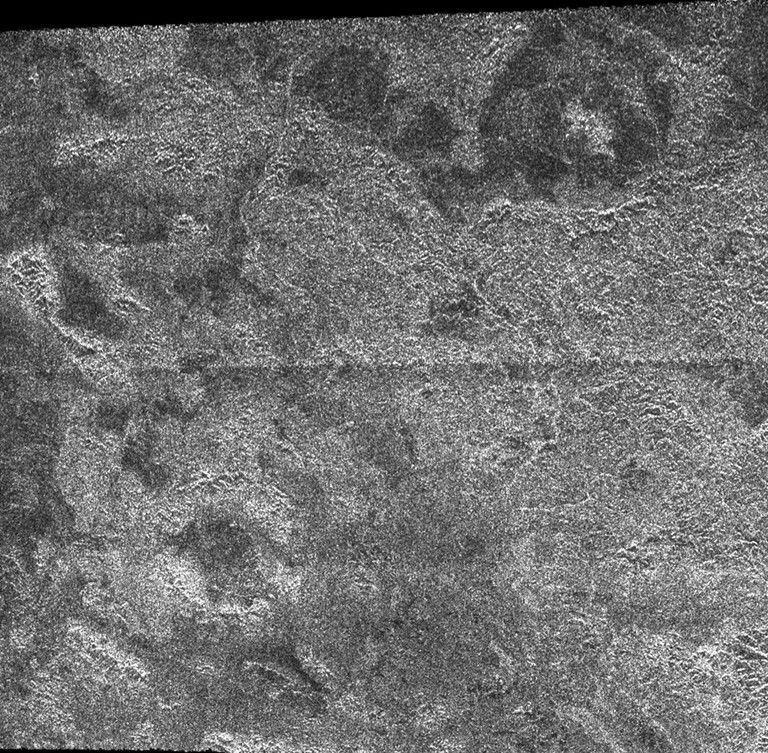Titan 111 Flyby: Eyes on Titan’s Xanadu Region
On May 7, the Cassini spacecraft soared over Saturn’s moon Titan at a distance of about 1,700 miles (about 2,700 kilometers).
The visual and infrared mapping spectrometer (VIMS) captured a mosaic of Titan's Xanadu region at a resolution of 6 miles (10 kilometers) per pixel. Xanadu is an Australia-sized bright region with geological features remarkably similar to Earth. The surface of this bright spot is modified by wind, rain and the flow of liquids. At Titan’s frigid temperatures, the liquid is likely methane or ethane.
VIMS also obtained high-resolution images of the impact crater named Menrva at closest approach.
The composite infrared spectrometer (CIRS) conducted limb sounding in the far-infrared to provide insight into the formation of Titan's southern winter polar vortex, as well as gathering information about the thermal structure and composition of the stratosphere. Cassini's cameras obtained images of Titan's surface and atmosphere, including eastern Shangri-La and western Xanadu.
Titan Flyby at a Glance
Date
May 7, 2015
Altitude
1,691 miles (2,722 km)
Speed
12,750 mph (5.7 km/sec)
































